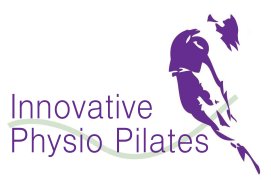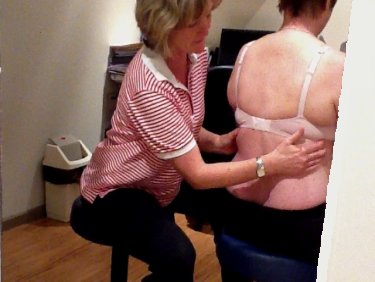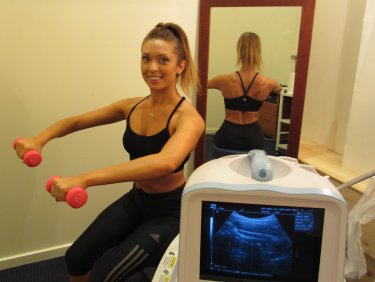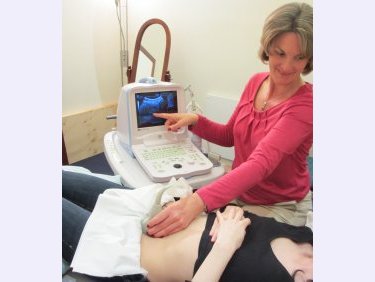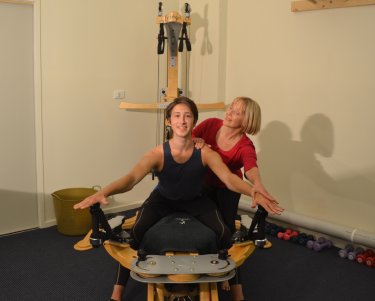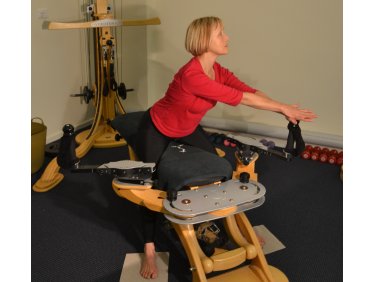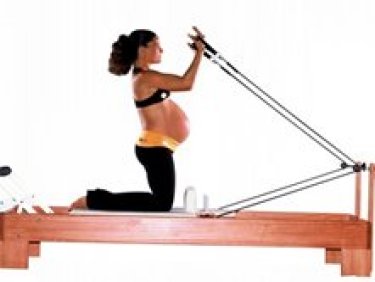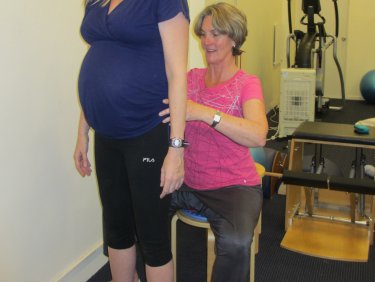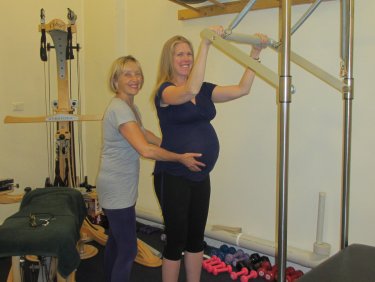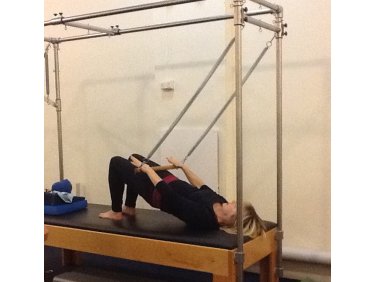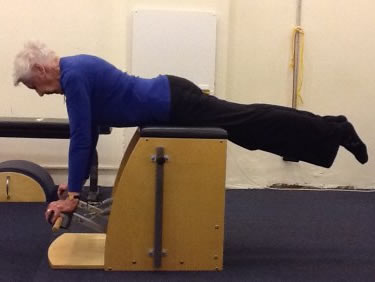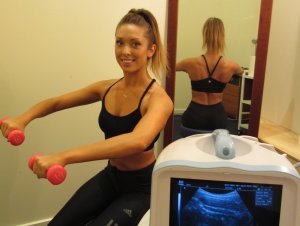Mastitis- Inflammation of the lactating breast / Mastitis / Blocked ducts
Our team at Innovative Physio promote breast feeding as a health promotion priority due to the many health and well-being benefits to mother and child.
Mastitis, inflammation of the lactation breast often referred to as blocked ducts is the most common reason to wean in the first 12 weeks after the birth of your child.
Mastitis means inflammation of the breast. It can be caused by blocked milk ducts (non-infective mastitis) or a bacterial infection (infective mastitis).
Only in recent history has the medical world understood the correct anatomy of the lactating breast.
Our understanding of anatomy for many years was based on dissections that were over 100 years old that described the lactating breast incorrectly. This was due to the anatomist pouring hot wax into the nipple opening distorting the delicate breast tissue. Through modern ultrasound imaging we now understand the lactation breast anatomy and this has directed clinical practice.
There are around nine ductal openings in the nipples and the ducts extent into the breast likes roots of a tree. The ducts role is to transport milk, not to store milk.
If the breasts are not emptied ideally due to many varied reason (which will be assessed by the lactation consultant / physiotherapist) the milk can then leak into the surrounding breast tissue forming a solid thickened tender often red area. The body lymphatic and venous system was unable to get the excess supply back into the body circulation via the axilla (armpit) and clavicular (collar bone). A developing clinical reasoned hypothesis is that the fascial (connective tissue) bands that make up the structure of the breast are tight and restricting the movement of fluid.
A breast lump (mastitis) develops which can be painful and distressing, requiring immediate expert care to relieve symptoms and restore normal comfortable breastfeeding. Symptoms of mastitis can include; redness, tension, pain and increase skin temperature of the breast, flu like symptoms of lethargy, and feeling unwell, you may even experience a headache or the baby starts to fuss while feeding.
The recent clinical thinking is the milk that has left the ducts and is in the surrounding breast tissue is being stopped from returning into the circulation by mechanical tightness from the dense fibrous bands that make up the structure of the breast. These fascia tissue blends into the pectoral muscles of the chest and this tightness may impact on reducing venous and lymphatic drainage from the breast to the armpit and collar bone.
Gill Smith has complete advanced physiotherapy training in the treatment of mastitis being mentored and educated by much respected Melinda Cooper, physiotherapist and lead educator of the Lactating Breast for Physiotherapist courses. Gill has completed both part 1 & 2 and constantly furthering her knowledge. Gill has trained her team at Innovative Physio to ensure that women can receive physiotherapy care in a timely manner whenever possible.
How can physio help?
- Therapeutic Ultrasound is used to soften the hard solid breast tissue to encourage drainage back towards the armpit and collar bone. Once the milk has left the ducts we do not encourage massage down to the nipples (this logic was based on incorrect anatomy description). The therapeutic ultrasound is based on a pulsating quartz crystal that simply causes vibratory movement of the tissue resulting in softening of this tissue. The therapeutic ultrasound has been used safely for many years in physiotherapy practice. It would be commonly applied to a tight calf muscle or tight band on the outside of the thigh often bringing about instant relief of symptoms as these tight tissues causing the discomfort are softened.
The breast tissue is delicate it is not advisable to massage vigorously as this could result in f damage to the ductal tissue and unwanted scarring...
- Lymphatic massage gently to the breast directed either to the armpit or collar bone and into the arm pit follows the therapeutic ultrasound to soften any thickened glandular tissue. You will be shown how to massage gently the breast and armpit.
- Pectoral (chest) muscles stretching to assist in elongating the front myofascial tissue - enhancing softness through the breast tissue.
- Exercises are given to encourage the diaphragmatic, lymphatic and muscular pumps to enhance lymphatic and venous drainage from the breast.
Treatment is recommended to be done over three consecutive days and this appears enough to soften the breast tissue and enhance drainage and dramatically reduced the breast thickening.
Other helpful information:
Factors that predispose a woman to blocked milk ducts, which can lead to mastitis, include:
- Poor drainage of the breast – this can be caused by poor attachment of the baby at the breast or limiting the baby’s time at the breast
- Engorgement of the breast due to a missed feed or delaying a feed
- A tight or ill-fitting bra or consistently lying in one position during sleep
- Holding the breast too tightly during feeding
- Trauma such as a kick from a toddler or pressure from a seatbelt.
- Poor physical health
- Nipple trauma caused by incorrect attachment of the baby during feeds
- The use of nipple creams, which can harbour bacteria.
Preventing mastitis
To help prevent mastitis:
- Mothers should thoroughly wash their hands before touching the breasts after a nappy change and toileting and use an alcohol based hand rub prior to feeding and throughout day if anyone in the house has a cold.
- Make sure the baby is positioned and attached properly on the breast.
- Avoid long periods between feeds. Feed frequently.
- Wear loose, comfortable clothing. Bras, if worn, should be properly fitted. Take bras of if possible and wear a tank top or singlet.
- Avoid nipple creams, ointments and prolonged use of nipple pads.
Other treatment options for mastitis
- Making sure the baby is feeding well on the affected breast – offering the affected breast first can help
- Check babies chin is well planted chest to chest and chin to breast
- The application of heat for a few minutes before a feed, and cold packs after a feed and between feeds for comfort
- A change in feeding position
- Frequent drainage of the breast through feeding and expressing.
- Antibiotics (for example, flucloxacillin or cephalexin) if infective mastitis, speak to your doctor
- Anti-inflammatory medication (such as ibuprofen) or analgesia (such as paracetamol) to relieve pain, if necessary for non-infective mastitis, speak to your doctor or pharmacist regards what medications are proven safe for breast feeding mothers
- Rest and adequate fluid intake
- Varying the feeding position to increase breast drainage. Encourage lying down on your back to breast feed incline about 30 degrees leaning on some pillows and enjoy skin to skin contact with you and your baby. Your baby has strong reflexes that will help them lift their head up and effectively attach to your nipple. Tickling under their feet will help them move towards your nipples. Enjoy- you can now relax and alternatively stretch out your arms overhead to keep breast tissue soft and breast fascia internally elongated.
Physiotherapy treatment ideally commences within the first 24 hours of symptoms, but can be beneficial to reduce pain and inflammation at any stage.
Where to get help about breast feeding issues:
- Contact your Maternal Health Nurse
- A lactation consultant – contact the Lactation Consultants of Australia and New Zealand
- An Australian Breastfeeding Association breastfeeding counsellor Tel. 1800 mum 2 mum (1800 686 2 686)
- Ring Innovative Physio 97761287 and mention you have Mastitis and we will make a big effort to see you on the day. We also treatment over the weekend on case be case needs. Afterhours physiotherapy incurs a 25% loading on the standard fee
Physiotherapy prices
- One hour $105.00
- 30mins $75.00 Private rebates available from your health fund
Hicaps machine available on site
General treatment is over three days with two initial one hour sessions followed be a final 30min session. This three day approach appears enough to dramatically reduce the symptoms of mastitis without the need of taking antibiotics immediately breast thickening, tenderness and redness occurs.
